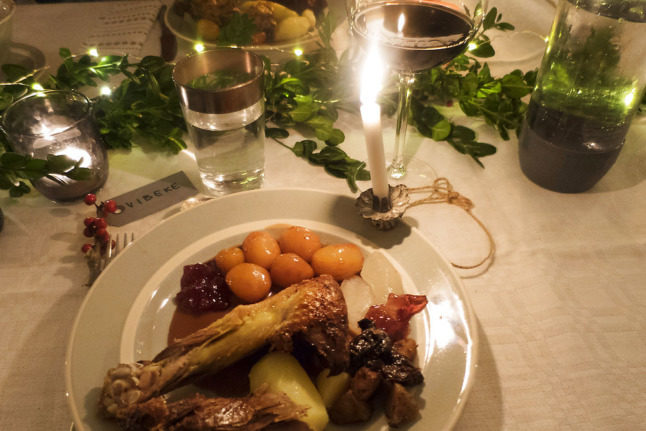We’d always planned to spend last Christmas in the UK. My daughter was born in March 2020, coinciding with the outset of the global coronavirus pandemic but, as worrying and uncertain as everything was at the time, we were sure it would have all settled down in nine months’ time. We started planning for her to spend her first Christmas with her grandparents, cousin and the rest of our extended family in England.
As we all know, this was far from how things turned out. The autumn and winter of last year saw spiralling Covid-19 cases across Europe and countries responding by introducing more and more restrictions, including on travel.
I’m not sure exactly when we conceded we’d have to cancel our plans to go to the UK for Christmas in 2020, but I do remember the look of resignation on my parents’ faces when I let them know. The writing had already been on the wall for a while by then.
Visiting my partner’s mother in December, I looked out of the window at the greying skies over Jutland, the dim lights of a distant Føtex store and the limp red and white pendants on flag poles as bare as the trees, and nothing felt familiar.
This was because, despite having lived in Denmark for almost a decade and a half, I’d never spent Christmas in the country. Every year I’d head home by the 22nd or 23rd, usually returning just before New Year to enjoy the rowdy firework displays in Aarhus or Copenhagen after a week of putting my feet up and savouring the familiarity and comfort of Christmas at home.
Denmark famously has its own Christmas traditions, comparable but certainly different to the British ones. I knew about them – I’ve exchanged information about national Christmas customs with many Danes over the years – but never witnessed them first-hand.
The big day came around quickly, not least because it all happens on the 24th, not the 25th.
Festivities did take a while to get going, though. Not until 4pm in fact, when ancient Disney Christmas special From All of Us to All of You, known in Danish as Disneys juleshow began on main TV broadcaster DR. Usually I’d have been watching an early-1980s David Bowie introducing The Snowman around now. A cup of warm gløgg (spiced red wine with raisins and almonds) was thrust into my hand, and I missed Bowie a little bit less.
After a couple more glasses of gløgg and wine, we sat down for Christmas dinner: roast duck, brown potatoes, boiled potatoes, gravy and red cabbage. It was of course already dark and a prolific number of candles were lit on the table and around the room, adding to the festive feeling of the star-topped tree, paper hearts and other decorations.
For dessert, we had risalamande, the popular cold rice sweet mixed with whipped cream, vanilla and chopped almonds and served with cherry sauce. By tradition, one whole almond is left in the dessert and whoever finds it wins a present, which is customarily a julegris, a chocolate pig with marzipan filling. This game is often fixed so that a child (or children) wins the prize, but the only child present was a nine-month-old and I ended up finding the almond in my bowl.
Then it was time to dance around the tree and exchange presents. Most of us had too much dessert, so it was a more sedate affair than I expected. After the little one was fast asleep we sat back on the sofas and had a couple more glasses of wine or maybe a few snacks.
It was all over before Santa traditionally lands his sleigh on rooftops and hops down British chimneys in the small hours of Christmas morning.
Danish families with young children often assign someone to dress up as Father Christmas and come round to deliver the presents to excited youngsters before dinner on Christmas Eve.
Maybe I’ll get the chance to audition for the role next year because our Danish-British family will be in Denmark every other Christmas for the foreseeable future – by choice, not restriction. I’m looking forward to it, because my first Danish Christmas gave me a better understanding of why this time of year is loved by so many Danes.
READ ALSO: My five favourite Danish childhood Christmas memories



 Please whitelist us to continue reading.
Please whitelist us to continue reading.
Member comments